New ISS Cubesat deployment date, October 4th, 2012
First 14:30-14:40 UTC: Order of WE-WISH, RAIKO by Astronaut Akihiko Hoshide.
Second 15:35-15:45 UTC: Order of TechEdSat, NanoRack/F-1, FITSAT-1 by JAXA GS.
ISS Cubesats deployment September 27, 2012
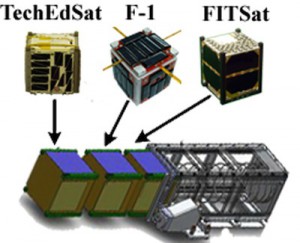 JAXA have announced the deployment of five CubeSats from the International Space Station (ISS) planned for Thursday, September 27 at around 15:10 UTC and will be broadcast live on the web.
JAXA have announced the deployment of five CubeSats from the International Space Station (ISS) planned for Thursday, September 27 at around 15:10 UTC and will be broadcast live on the web.
The CubeSats are mounted in a JEM-Small Satellite Orbital Deployer (J-SSOD). In one pod are FITSAT-1, TechEdSat and F-1 (NanoRacks) and in the second pod is WE-WISH and a scientific 2U CubeSat RAIKO.
FITSat 1 (Fukuoka Institute of Technology)
http://www.fit.ac.jp/~tanaka/fitsat.shtml
High-speed data test, high power LED visual tracking
CW Beacon 437.250 MHz,
FM Data 437.445 MHz,
High speed data 5840.00 MHz.
TechEdSat (NASA Ames)
http://ncasst.org/techedsat.htmlTelemetry downlink on 437.465 MHz.
It is also carrying SatPhone ground station hardware and had planned to transmit from space using frequencies allocated to ground stations to communicate via the Iridium and Orbcomm satellite phone networks. This would have been a first for a CubeSat, however, a statement from the team says: “We were forced to disable the Iridium modem as our FCC license did not come in time. As usual, building the satellite is the easy part.”
F-1 (FPT University) – Information for Radio Amateurs http://fspace.edu.vn/?page_id=27
http://fspace.edu.vn/?page_id=10
On-board camera for earth observation mission
Yaesu VX-3R 1, 437.485 MHz FM downlink:
o Solar cell power only, operates in sunlight only
o Output power: between 0.1W and 0.3W depending on illumination, half-wave dipole antenna
o Morse code beacon (10 chars) using FM CW every 30 seconds, listen here
Yaesu VX-3R 2, 145.980 MHz FM downlink:
o Rechargeable battery, operates in dark and sunlight
o Output power: max 1.0W, half-wave dipole antenna
o AFSK 1200bps, half duplex, one AX.25 packet every 60 seconds
WE-WISH (Meisei Electric Co., Ltd.)
http://www.meisei.co.jp/news/2011/0617_622.html
Infrared camera for environmental studies
Downlink on 437.505 MHz

[PE0SAT Thanks amsat-bb and JE9PEL for this information]
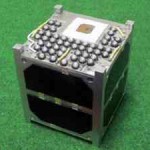 Fitsat-1 (Niwaka) Led Experiment over Europe
Fitsat-1 (Niwaka) Led Experiment over Europe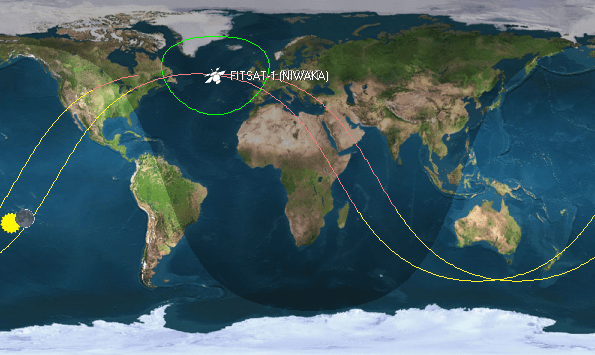
![]()

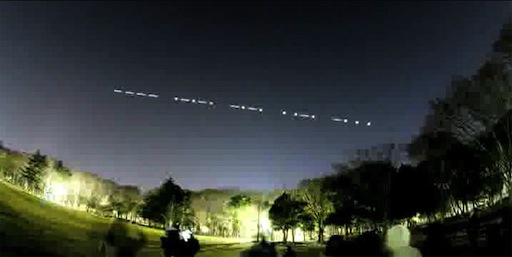 The led experiment comprising a bank of high power LEDs that will be driven with 200W pulses to produce extremely bright flashes that may be visible to the unaided eye of observers on Earth.
The led experiment comprising a bank of high power LEDs that will be driven with 200W pulses to produce extremely bright flashes that may be visible to the unaided eye of observers on Earth.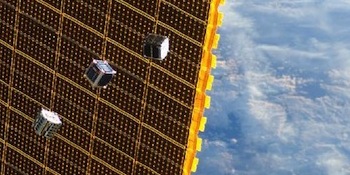 The TLE of the five CubeSats recently launched from ISS are now available with the NORAD registration numbers 1998-067-CN, CP, CQ, CR, CS. 1998 ? Yes as NORAD considers they are parts of the ISS, the first module of which, Zarya, was launched on November 20th 1998 and got the NORAD registration number 1998-067-A.
The TLE of the five CubeSats recently launched from ISS are now available with the NORAD registration numbers 1998-067-CN, CP, CQ, CR, CS. 1998 ? Yes as NORAD considers they are parts of the ISS, the first module of which, Zarya, was launched on November 20th 1998 and got the NORAD registration number 1998-067-A.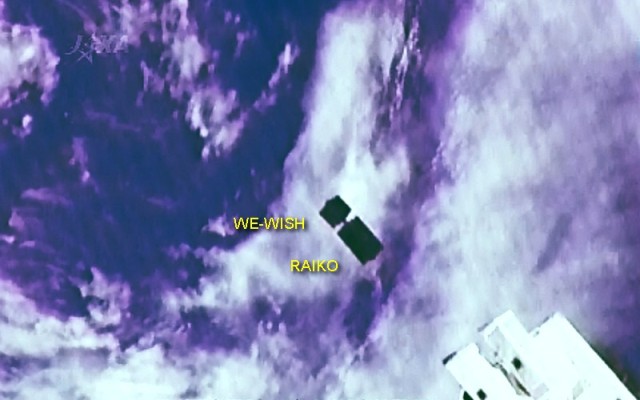
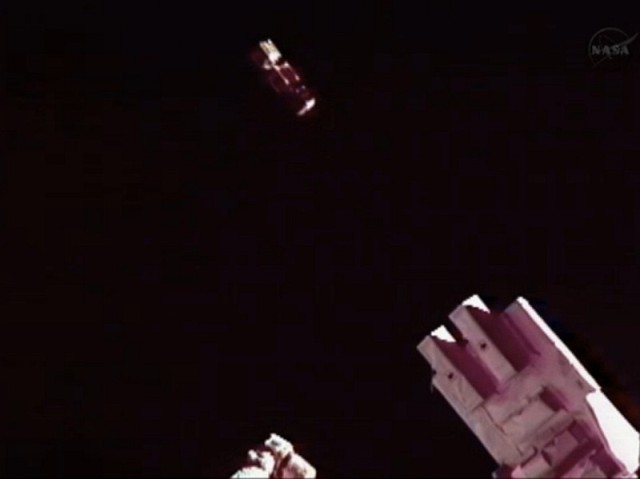
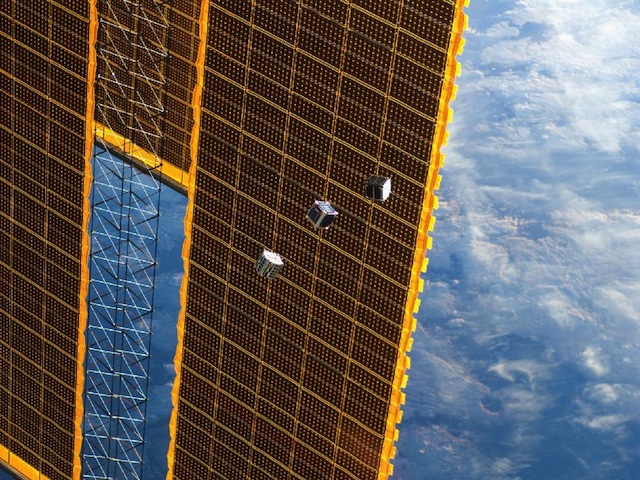
 JAXA have announced the deployment of five CubeSats from the International Space Station (ISS) planned for Thursday, September 27 at around 15:10 UTC and will be broadcast live on the web.
JAXA have announced the deployment of five CubeSats from the International Space Station (ISS) planned for Thursday, September 27 at around 15:10 UTC and will be broadcast live on the web.
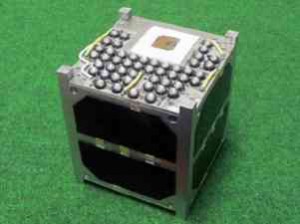 FITSAT-1 (Fukuoka Institute of Technology)
FITSAT-1 (Fukuoka Institute of Technology)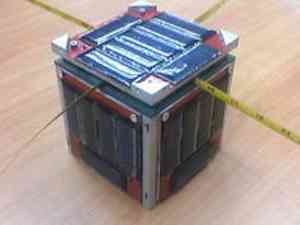 Wiki-TechEdSat
Wiki-TechEdSat